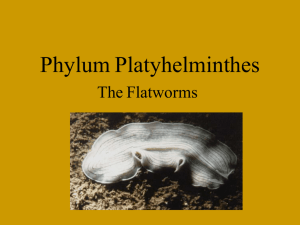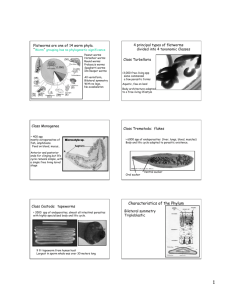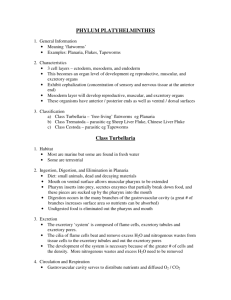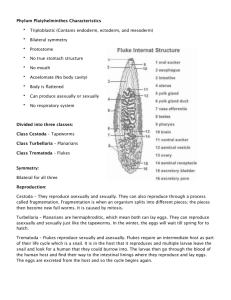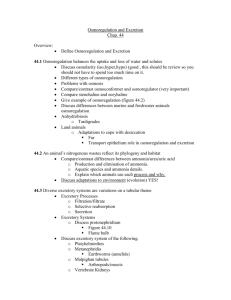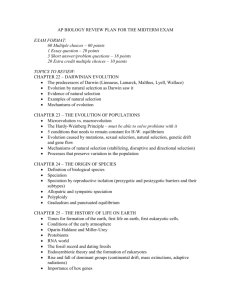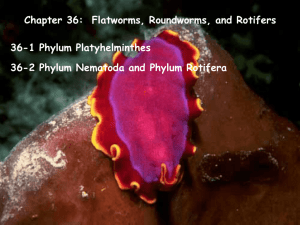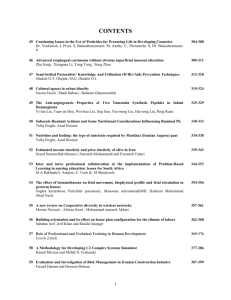Body cavities P. Platyhelminthes- the flatworms, tapeworms
advertisement
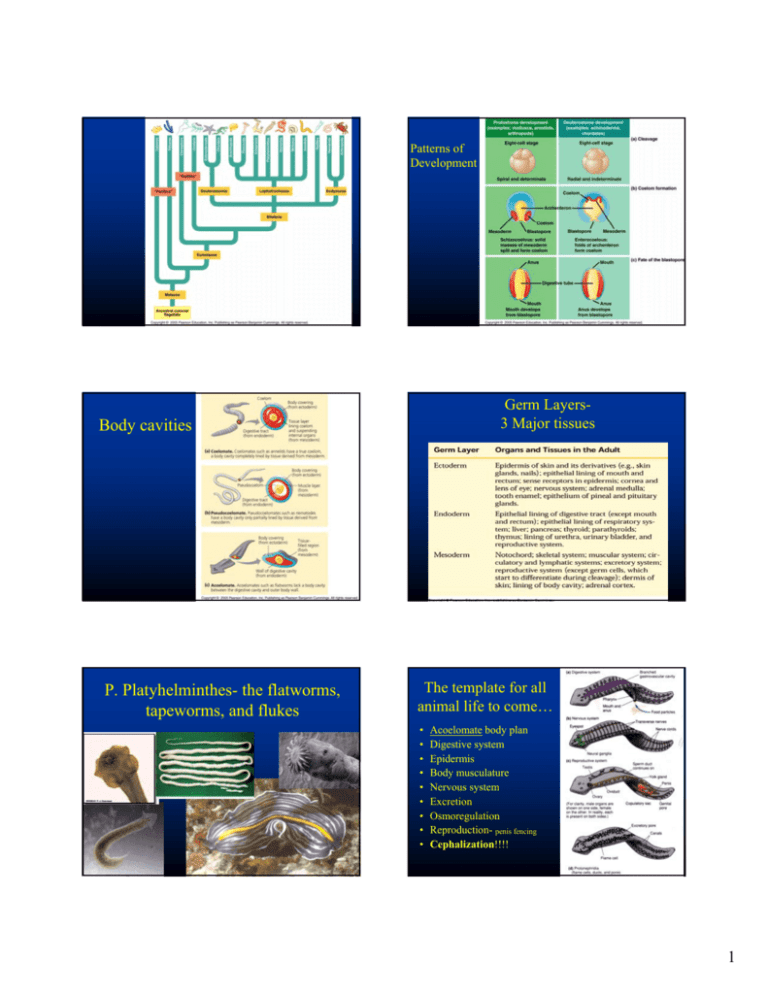
Patterns of Development Germ Layers3 Major tissues Body cavities P. Platyhelminthes- the flatworms, tapeworms, and flukes The template for all animal life to come… • • • • • • • • • Acoelomate body plan Digestive system Epidermis Body musculature Nervous system Excretion Osmoregulation Reproduction- penis fencing Cephalization!!!! 1 Classes of Phylum Platyhelminthes Planarian Triclade and Polyclade Cross Section of Flatworm Excretory and Reproductive system Excretory system Flame cells (Protonephridia) Used mostly for osmoregulation Body (mesoderm) Cap cell Cilia Tubule cell To outside 2 Class Trematoda • • • • All parasitic, mostly in vertebrate as definitive host Flukes- complex life cycles; 1, 2, 3+ hosts Most have obligate hosts, often several. Huge cause of illness in humans. – Blood, liver, GI, heart, brain, skin… • Tegument; cysts, adhesion; reduced cephalization Flukes The life history of a blood fluke, Schistosoma mansoni Genital pore Cercaria Uterus Yolk glands Ovary Seminal receptacle Testes Over 1 million deaths/year Over 200 million cases/year Easily treated* Miracidium Sporocyst Class Trematoda Limb abnormalities were induced at high frequencies in Pacific treefrogs (Hyla regilla) exposed to larvae of a trematode parasite Ant and Snail behavioral changes 3 Cl. Monogenea Monogeneans • Old order within Trematoda, but now separate class • All parasites, mostly on gills of fish, but other places as well (Hippos, amphibs) • Big problem in intensive fish farming • Odd reproduction- only one host! Class Cestoda Taenia saginataBeef Tapeworm •Tapeworms- long, flat bodies with sections-Proglottids Segmentation? •No Digestive system •Tapeworms, 100’s millions of cases •Tegument with microtriches for very high SA •100’s thousands of deaths •Complex life cycles •Extremely easy to treat* Mature Proglottids Where’s the Beef? ~1% of Cattle are infected; 20% are not inspected; 25% of infections are missed…McTapeworm™©??? 4
